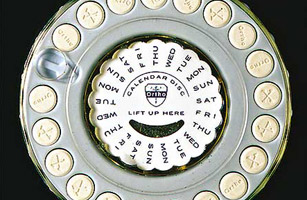
May 9, 1960
Margaret Sanger, totally unaware that her lifelong dream had become reality, spent the day at her home outside Tucson, Ariz. Since 1914 she had battled ridicule and rigid laws, even gone to jail, all in pursuit of a simple, inexpensive contraceptive that would change women's lives — and save some as well. Now she was 80 and retired from her globe-trotting efforts.
No one from G.D. Searle & Co., the drug firm, thought to call the woman who had pioneered and pushed for funding to develop the world's first birth-control pill, called Enovid-10, a synthetic combination of hormones that suppresses the release of eggs from a woman's ovaries. Nor did she hear from John Rock and Gregory Pincus, the doctors who developed the oral contraceptive with $3 million that Sanger had raised from her friend Katherine McCormick, the International Harvester heiress.
Sanger got the news the next morning when her son Stuart and granddaughter Margaret read the newspaper. There they found a five-paragraph story announcing the Food and Drug Administration's approval of the pill as safe for birth control. The two, who lived next door, ran across the yard and opened the sliding glass door to Sanger's bedroom. It was 7 a.m., and she was eating breakfast in bed. Without the least bit of elation, just a sigh of relief, Sanger said, "It's certainly about time." Then perking up, she added, "Perhaps this calls for champagne." Her son, a doctor who had patients waiting, and her granddaughter, due for class at nursing school, begged off. So Margaret Sanger, who had made a lifelong crusade of birth control after seeing her mother die at age 50, worn out by 18 pregnancies and 11 children, celebrated her victory alone — but triumphant.